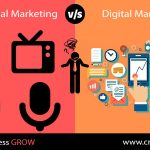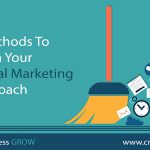What Is The Post-Click Automation Definition
There are countless ways in which digital advertising technology has advanced in current years. Marketers will quickly produce, take a look at and optimize many customized, targeted ads. Owing to the various tools obtainable to section audiences and automatically deliver the most effective ads to the correct people, marketers will simply scale their advertising campaigns and maximize clicks.
Google Ads, especially, has progressively been automating their ad creation and delivery with options like Dynamic Search Ads, Ad Customizers, automated Bidding, and more. Facebook isn’t way behind with their automated Ads and Dynamic inventive Ad options.
Then, of course, almost all advertising platforms these days give retargeting capabilities to succeed in prospects who have already shown interest in a product, service or brand.
The Problem that Many Advertisers Don’t Pay Attention To
Even with all of those automated advertising choices across a large sort of ad platforms, 96% of paid ad clicks still don’t convert. This is often a colossal waste within the multi-billion-dollar digital advertising industry, and also the main reason is as a result of Post-Click Automation has not been a centered initiative within the market. Post-click personalization and conversion technologies are seriously lagging.
They need to be able to move at the speed of advertising. That’s the only way to notice the total potential of today’s advertising technology.
While most technology continues to target rising the pre-click stage, a crucial class of software has occurred recently to assist marketers to reclaim the post-click expertise – Post-Click Automation software.
What Is Post-Click Automation?
Post-Click Automation ( PCA ) is that the class of marketing technology that takes full advantage of advertising conversions for marketers by providing 1:1 customized post-click experiences at scale.
Post-Click Automation software bonds the gap between pre-click segmentation and post-click personalization – an aim that agencies acknowledge as vital. In fact, once asked regarding the largest advertising “game-changer” within the next 5 years, agencies prioritized personalization as most wanted, tied with Artificial Intelligence ( AI ) and machine learning.
While most individual solutions only target one single aspect of the post-click expertise – tools for data collection, page creation, A/B testing or optimization – a Post-Click Automation ( PCA ) platform combines all of them into one end-to-end solution.
This is perfect for agencies as a result of they don’t allow the budget for multiple tools or the resources for hiring and training employees. Instead, Post-Click Automation ( PCA ) software is intended to flawlessly integrate with current processes to bring results quickly using four key elements.
The Four Elements of Post-Click Automation
Complete Post-Click Automation ( PCA ) platforms are put up on four pillars – ad mapping, scalable creation, personalization, and optimization:
In this section, we’ll talk in detail about all four and the ways they each contribute and work along to boost the general post-click expertise.
1- Ad Mapping
This is a significant element of the post-click expertise, as a result of it permits marketers to focus additional on strategy and fewer on tedious, repetitive daily tasks.
Currently, most Post-Click Automation ( PCA ) marketers download campaign data to a spreadsheet and by hand map their ads to post-click landing pages. This method makes it very difficult to assess the number of post-click pages required per campaign, log the updates created to every page, and keep the message match consistent between every page and ad.
Post-Click Automation ( PCA ) platforms are distinctively built for Pay Per Click ( PPC ) marketers to examine the whole advertising funnel and are equipped with the power to attach ad networks to specific post-click landing page experiences. This way, advertisers will save time and stay additionally organized in determining that ad/ad group connects to every page.
2- Scalable Creation
One of the largest difficulties in optimizing the post-click stage is making enough pages to deliver relevant post-click expertise.
Every promotion needs its own post-click page. Meaning that if you have got four completely different audience segments among a campaign, you must have a separate post-click landing page for each one to actually give relevant expertise from beginning to the end. The additional relevant every page is to the visitor, the lower your bounce rate and also the higher the prospect you have got of changing them.
For an agency serving many purchasers, though, at the same time running individual campaigns per audience section isn’t one thing that’s usually thought of. The work it takes to form one page will span days if it’s built from scratch, thus making multiple pages from scratch in a very timely manner looks nearly not possible.
Creating one post-click page per audience section is just potential with an answer that permits for simple scaling, and that’s precisely what Post-Click Automation platforms do.
They offer:
- Intuitive builders, allowing even non-technical staff to publish a page in minutes.
- Fully customizable templates, pre-built with conversion-centered design.
- Page blocks that give the potential to form pages quicker than ever.
- Manual Editing, thus any user will create single changes to at least one page, like adding a widget or modifying a headline.
- Global scaling, that permits users to form widespread changes from one place.
3- Personalization
Creating one post-click page per campaign or audience segment is one factor, however, personalizing each one is another. Without digital advertising personalization, particularly within the post-click stage, you run the chance of lower conversion rates. To provide post-click expertise that’s even as relevant because of the pre-click expertise, every page should match the audience and message of its referring ad or email. This includes its language, media, colors and, most significantly, the general offer.
Advertising personalization through message match achieves 3 things:
- Trust: once audiences reach a page that matches the ad they clicked on, they know that they are in the right place.
- Brand identity: The additional on-brand your pages are, the stronger and additional recognizable your brand becomes, and also the additional your offers are consumed.
- Positive user experience: Relevancy between ad and post-click page makes it easier for prospects to judge your offer. There’s no scouring links and navigation menus to access the resource you promised within the pre-click stage.
Without Post-Click Automation software, edits to match every ad would take way an excessive amount of time. With PCA, everything from colors to logos to text to widgets, etc., are quickly and simply editable, permitting agencies to stay their consumer post-click landing pages customized and on-brand.
4- Optimization
The last pillar of Post-Click Automation ( PCA ) is optimization. This refers to any or all activities that contribute to raising the post-click expertise – data collection, analysis, testing, editing, etc. No Post-Click Automation platform is complete while not all of them.
At identical time, there’s no scalable way for agencies to boost their conversion rates without optimization. That’s wherever each qualitative and quantitative strategies of data collection come into play, including:
- Heat maps to track scroll depth, clicks, and mouse movement.
- Analytics dashboards to track traditional metrics like cost per visitor ad lead, total guests, conversions, etc.
- A/B testing to check varied elements, page speed, etc., of various pages to visualize that converts higher for a common goal.
Post-Click Automation ( PCA ) platforms come fitted out with all of those, permitting users to gather data on page design and take a look at different approaches to conversion. Brands additionally would like the service element, though, that is wherever agencies come into play.
Why Agencies Must Offer Post-Click Automation ( PCA ) as a Service to Customers?
No successful agency is maintained for the services it delivers, but rather, the services it delivers well.
Agencies without a big number of employees and budget were once banned from providing Post-Click Automation services. And since post-click results are an even bigger effector of churn than pre-click results, this places small to medium-sized agencies at the mercy of their purchasers. If by accident, you had a consumer who understood the importance of the post-click stage, you were set up for a good relationship. Yet, if your consumer didn’t prioritize the post-click expertise, then you were probably let go.
Today, agencies of all sizes will take charge of their fate with a Post-Click Automation platform. Whereas this allows higher consumer retention (a larger producer of profits than acquisition) through the achievement of key performance goals, it additionally helps hugely with the acquisition.
Add Post-Click Automation Services to Your Arsenal
By providing Post-Click Automation to purchasers, you’ll set apart your agency from the competition. You’ll show them that with automation, scalable creation, personalization, and optimization, you’ll be able to drive additional conversions for their campaigns, whereas saving them time and cash.
It doesn’t stop there, though. With Post-Click Automation ( PCA ) services in your arsenal, you’ll additionally generate additional new purchasers for yourself, enjoy a higher retention rate, and retake management of your success within the method.



